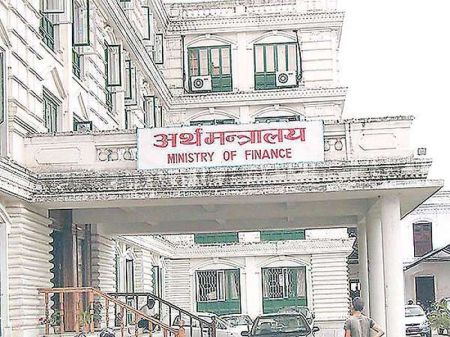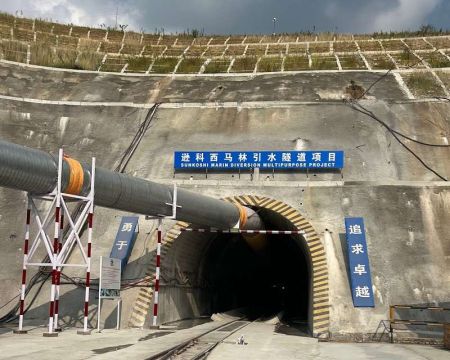The third edition of Money Expo for 2013 is being held in the capital from October. Aiming to promote investment opportunities and wealth protection strategies, this expo is the largest finance and investment show in Nepal 31 till November 2. An interaction programme ‘BFIs: Problems and Challenges’ was conducted by New Business Age on September 19 as pack up the reen up to the Expo. Experts from banks and financial institutions presented their opinion on the current status of the financial sector. Excerpts:
‘Financial Sector is Completely Secured’

Bhaskar Mani Gnawali
Spokesperson, Nepal Rastra Bank
• There was an influx of financial institutions after the implementation of the Liberal License Policy which created unhealthy competition between the institutions. This resulted in maximum investment in the real estate sector, and thereby created problems in the financial sector.
• After that, the central bank decided to control loans in the real estate sector and a deposit insurance policy was also introduced. There is now a system of deposit insurance up to Rs 200,000 for all deposits of natural persons, so that there is no fear to deposit money in any bank and financial institution.
• Influx of banks and financial institutions with the Liberal License Policy brought problems in the financial system. To control these problems, the central bank came up with a merger policy which has been successful thus far. We have brought this policy for the qualitative development of financial institutions and their sustainability. The merger is not a compulsion – it is a demand of the times.
• The merger policy has not only increased the investment capacity of financial institutions but also performed as the check and balance mechanism. It has also discouraged financial crime.
• There are altogether 175 financial institutions, including all types and classes of banks. This is still an excess number in the context of Nepal.
• Rural access is increasing with the help of microfinance companies. Until now, 35 microfinance institutions have been permitted to operate and there are more coming in.
• Medium level development banks have also helped a lot to raise the rural economy and alleviate poverty in Nepal. Model banking can be the best example for development in the country.
• Total deposit in the financial system of Nepal amounts to Rs 1300 billion. Out of this, only about Rs 700 billion has been invested in real estate. This shows that investment in real estate won’t be affecting the banking system of Nepal in the upcoming days.
• Bank and financial institutions have to invest at least 12 per cent in the agriculture and hydro sectors. We have also planned to invest 20 per cent in the productive sector.
Failure to implement Secured Transaction Act as a Problem
.jpg)
Rajan Singh Bhandari
President, Nepal Bankers’ Association
• Though the Secured Transaction Act is promulgated, it has not been implemented till date. This is seen as a problem.
• The task of registering collaterals should be given to the credit Information Bureau. This reduces the possibility of double investment in working capital financing.
• Lately, because of unhealthy competition among some banks, there have been possibilities of double exposure in a single borrower through working capital financing.
• The capital fund of banks is very strong. So, investment in real estate is a small amount. This will no longer create long term problems in the banking sector.
• Though there are a lot of opportunities, there is no favourable environment for investment. Deposits and loan investment have doubled in four years but there is no change in the growth rate of the banking sector which is still around 4 per cent.
• There is no technical risk in the banking sector. They are expanding technical services and facilities which have benefited this sector.
• Banks are capable of securing themselves from probable operational risks. The check and balance system of the banking sector is effective.
Need Classification of Development Banks

Krishna Raj Lamichhane
President,
Development Bankers Association, Nepal
• The main problem of development banks is its classification. There are some such banks with higher amount of paid-up capital as well as small paid-up capital. So, the issues of these banks are different. The small development banks have competition with cooperatives whereas big ones have competition with commercial banks. Thus, classification has been a major issue of development banks.
• The central bank has been providing various facilities to development banks expanding branches in rural areas, but not to those which have the main office in rural areas. In fact, those banks with head office in rural areas need support and assistance. They are working with low capital and in spite of lack of skilled man power. The government should help them in risk minimization.
• People in rural areas are less aware about banking habits compared to urban people. Along with this, lack of skilled man power, weak collateral, lack of security and infrastructure have increased risk of banking in those areas.
• Though the number of development banks have decreased to 86 from 88, their branches have increased to 77 which is a remarkable number.
• The working area of financial institutions should be divided during the classification of banks.
‘We are not able to regain the trust of customers’
.jpg)
Rajendra Man Shakya
Chairman,
Nepal Finance Companies Association
• Finance companies are diminishing rapidly and have reached 55 from a total of 88. We simplified the procedures of financial transaction for easy access among common people and high return in the financial system, but the misuse of these systems by some of our finance company holders and operators created problems. Besides this exception, the condition of finance companies is not that bad but we are still not being able to regain the trust of people.
• The largest share of investment of finance companies is in real estate. More problems were created after the Nepal Rastra Bank introduced Dynamic Provisioning.
• Investment stuck in real estate has not been recovered because of high investment and lack of new sectors for investment. Interest rate is high because of high investment.
• ‘C’ class companies are facing problems as the regulatory body has included all financial companies under the same umbrella.There are some issues which only ‘C’ class companies are facing, and which should be addressed by separate regulations.
• Loan recovery is also seen as a problem these days. Most finance companies invest large amounts of money on land, houses and businesses knowingly or unknowingly. Loans taken in the name of business and commerce is also being used for investing on land and houses.
• We have no right of prompt decisions as commercial banks. They can increase or decrease the interest rate according to their convenience but we are not allowed a make difference on loan amount. So, customers who don’t have access to commercial and other banks come to us. But the problem of investment is interest rate. The depositors seek higher interest rate because of high risk, and so finance companies have to collect deposits by providing high interest than that of commercial banks. Therefore, we should be giving priority to invest in sectors where the return of investment is secure.
Problems in Expanding Microfinance Services

Dharma Raj Pandey
Chairman,
Nepal Microfinance Bankers Association
• Micro finance basically deals with poverty alleviation, providing loans without collateral in rural areas, collecting small savings and providing micro insurance services. So, it has high cost and cost reduction has been a major challenge.
• Expanding services in rural areas is our responsibility. But we are facing difficulty in expansion because of limited capital and high cost. Access to rural areas, management of skilled manpower and information system has also been major problems for us.
• Microfinance has to be better understood. They conduct programmes for poverty alleviation which is unlike conventional financial institutions. Beyond loans and deposits, we also focus on other activities like generating skilled manpower, helping them to make plans. We inspect during implementation of the business plan or help in accessing people and their products in the market. It heightens our cost and risk so the central bank has to support us further through monetary policy.
• We are not able to expand our services throughout the country. There are still 10 or 11 districts where micro finance services are not available. Within three to five years, we aim to reach each and every district of the country. For this, the government has to support us in organizational development.
• The government has not been able to make proper evaluation of the financial services that support sustainable development objectives. Services helping the rural people access finances should be acknowledged by the government.
• The size of loan is increasing these days which has increased the risk. We have been planning to formulate self regulation.
• Like any other organizations, microfinance also needs some profit as it has to satisfy its customers with return of investment, risk bearing and expansion of its services. Therefore, the interest rate is high and we are trying our level best to reduce it.
• Another challenge of this sector is lack of skilled manpower and poor information technology system.






















